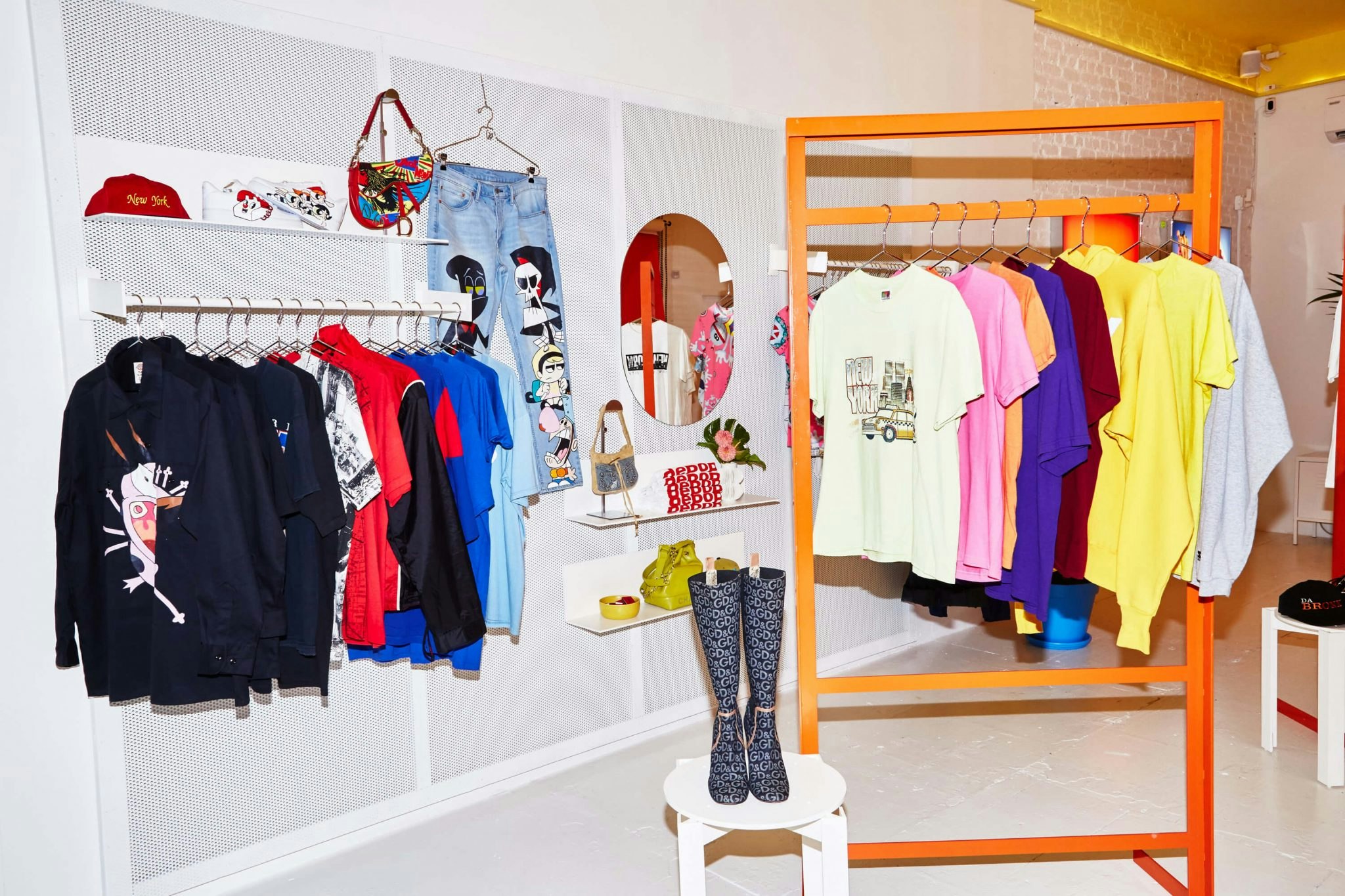Like wild nights out and commuting on a rush-hour train, bargain hunters rifling through racks in charity shops seems like a snapshot from a different world.
But it’s still happening — just that it’s all online now.
The reinvention of retail during the pandemic didn’t just sweep up the local restaurant doing click and collect; it also nudged Europe’s charity shops online, selling their most fashionable wares on apps like London-based Depop, Zipsale and Thriftify.
“Most of our members have been using online platforms for some time,” says Robin Osterley, chief executive of the Charity Retail Association (CRA), a trade body that represents around 80% of the UK’s 11,200 charity stores. But until recently, that’s meant holding back the most precious items to list on eBay.

The Depop revolution
Now charity shops are doing so much more than eBay, using apps such Depop, one of the most popular second-hand clothing apps, which is used particularly by younger, Gen Z consumers, to sell more of their clothes. This has allowed them to sell more clothes and appeal to new audiences.
“It’s a better way of improving the demographic for those sorts of items,” says Osterley.
Peter Semple, Depop’s chief marketing officer, says: “During Covid and lockdown, [using Depop] has become even more valuable to them as it provides a platform to continue to operate their businesses safely while physical retail is closed, vital volunteering numbers decrease and donations increase significantly.”
“On Depop, not only can they reach a younger demographic with a wider offering than they can on their shop floors, but in most cases, trade online for the first time,” he adds.
Only around one in 10 of the CRA’s members are using apps like Depop, reckons Osterley, but those who are find it successful and the number is growing. It's just another example of a bigger trend where the pace of digitisation in businesses has been rapidly advanced by coronavirus.
Top sellers
The British Heart Foundation and Cancer Research UK, two of the largest UK charities, achieved 'Top Seller' status on Depop for their first four months on the platform — which means they sold more than £2,000-worth of items for four months, or consistently sold items at £15 or more for four months in a row.
That steady stream of income is certainly welcome: while the entire high street has struggled during the cycle of repeated lockdowns due to the coronavirus, the charity sector has been hit worse than most.
Osterley reckons up to 10% of the currently closed bricks-and-mortar charity shops across the UK won’t reopen if the high street does in the spring.
For every month charity shops are shut, the organisations behind them lose £28m in income.
“It’s been tough on them,” he says. For every month charity shops are shut, the organisations behind them lose £28m in income to fund their work. “Online hasn’t been a saviour exactly, but it has provided some mitigation of those financial pressures,” says Osterley.
For the Air Ambulance Service, online retailers helped sustain their work.
“Our shops were closed for pretty much six months of last year, which was a significant amount of income taken away,” says Gemma Ingram, the charity’s head of retail. “But the services didn’t stop; we did around 3,600 potentially lifesaving missions last year. Maintaining an income stream is huge, and it’s going to be part of the charity’s future.”
Currently online sales — which includes eBay, Amazon, Depop and Facebook Marketplace — makes up around 10% of their total retail sales, though Ingram has hopes it can become a third or half in the future.

Fresh audiences
New digital platforms also opens them up to other audiences who ordinarily wouldn’t dream of chancing their luck among the rails of natty sweaters and displays of chintzy porcelain.
Osterley’s son uses Depop all the time to buy clothes, and a parcel arrived for him the morning we spoke. “But I don’t think he’s ever set foot in a charity shop in his life to buy something,” his father admits. “It’s opening a bit of a new audience for them in lots of ways, and it’s part of the backlash to fast fashion, which seems to be becoming more and more prevalent.”
“It’s a real younger audience,” says Ingram, whose Depop customers are in their early 20s. The Air Ambulance Service has even integrated influencer marketing into their retail arm, partnering with two influencers who promote sustainable fashion and upcycling through Depop. “There’s a pre-conception of charity stores, and I really want to change that if I can,” she says. “The younger generation are driving that movement.”
Yet the humble charity shop’s general audience isn’t the app-savvy teen, and so selling on Depop and the like will be a stopgap measure until the physical stores re-open — when it’ll likely be an opportunity to eke out a little more money for some of the trendiest items, similar to the role eBay currently plays.
Bouncing back
Osterley is hopeful the charity shop sector will bounce back, citing an increase in average transaction value of around 30% after the last lockdown. “The average transaction value in normal times is around £5.50 or £5.60, and last year when they were open post-lockdown, it shot up to £6.60 or £6.70 — which is quite a substantial increase,” he says. “I think that’s largely fuelled by people coming in and determined to spend.”
There’s also the potential of pent-up supply flooding the market — which may make app-based charity shop-selling more attractive.
Cancer Research UK has joined Depop’s wholesale platform, which supplies excess stock directly to independent sellers on the app for their own shops.
“With such increased donations during this time, plus knowing that only 10-30% of items donated to charity shops ending up on the shop floor, this has been an incredibly creative way to not only support young entrepreneurs, but open a new income stream for charities,” says Semple.